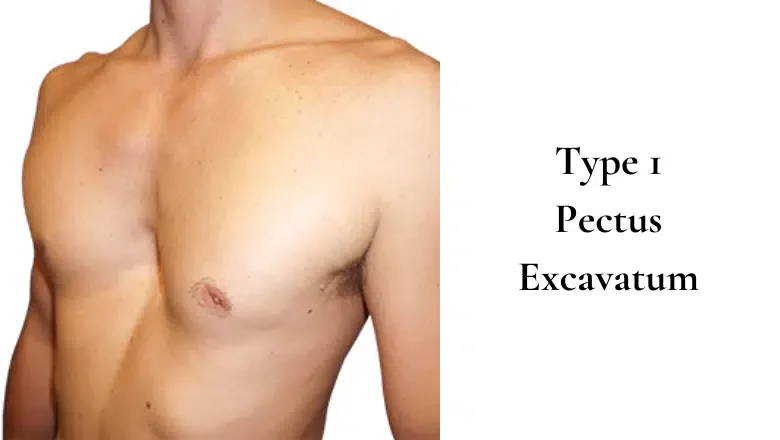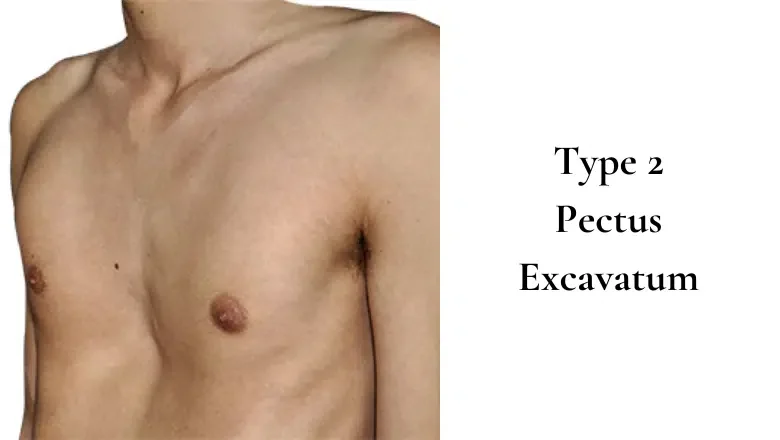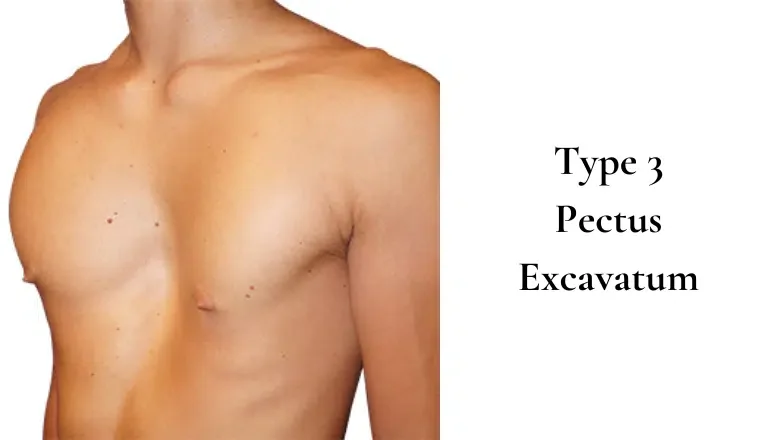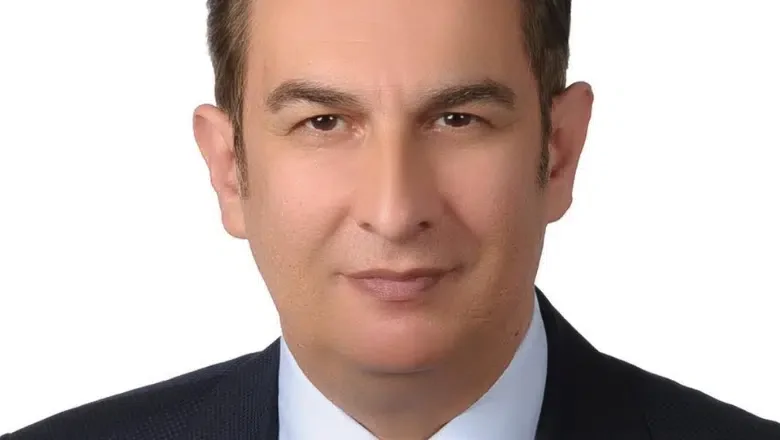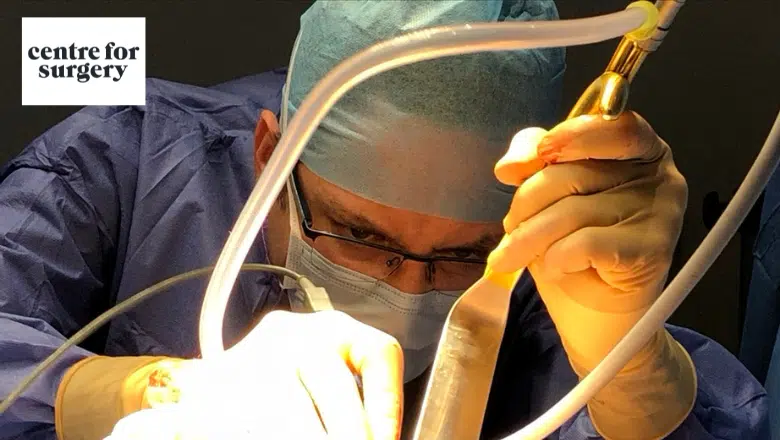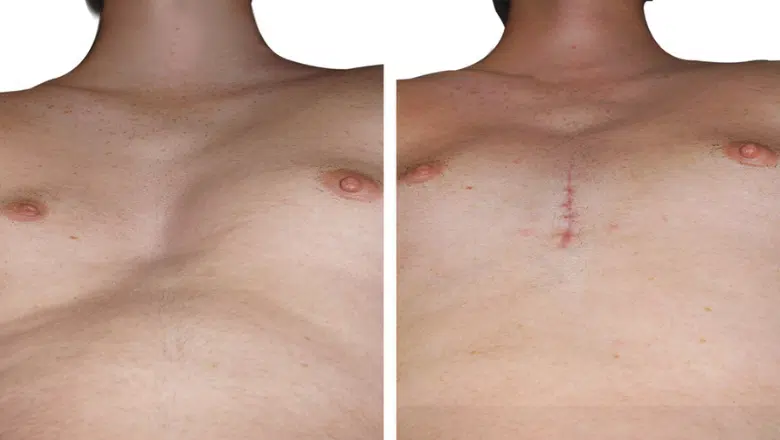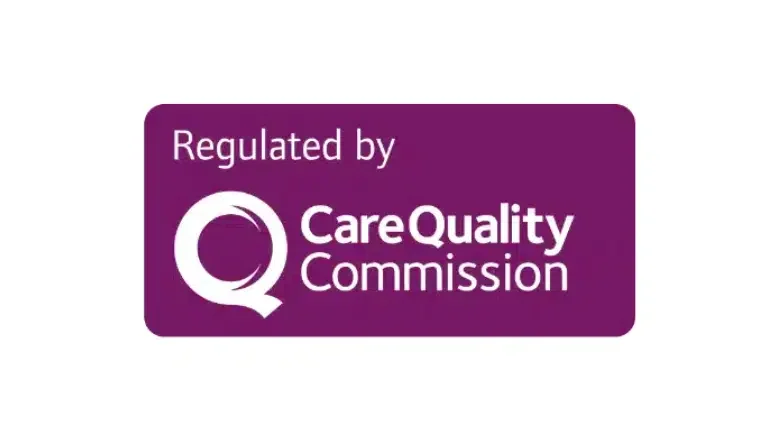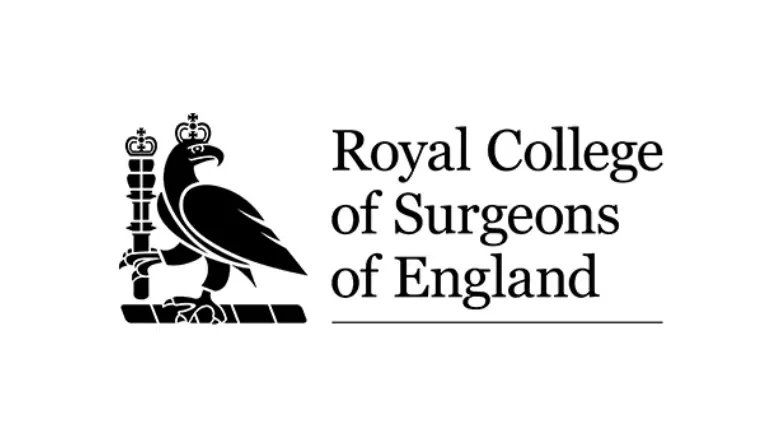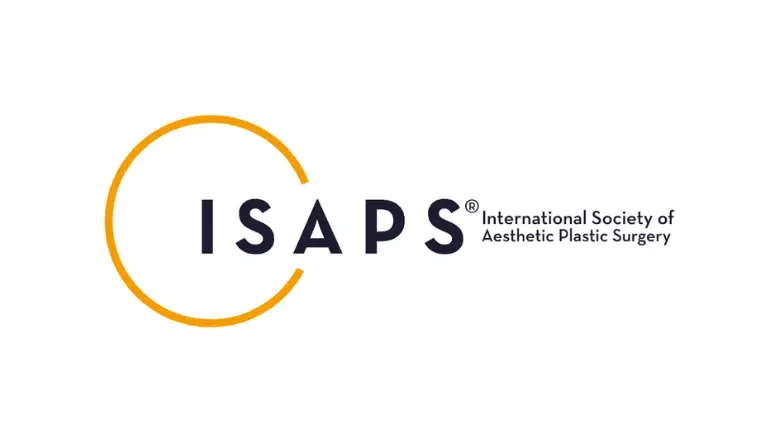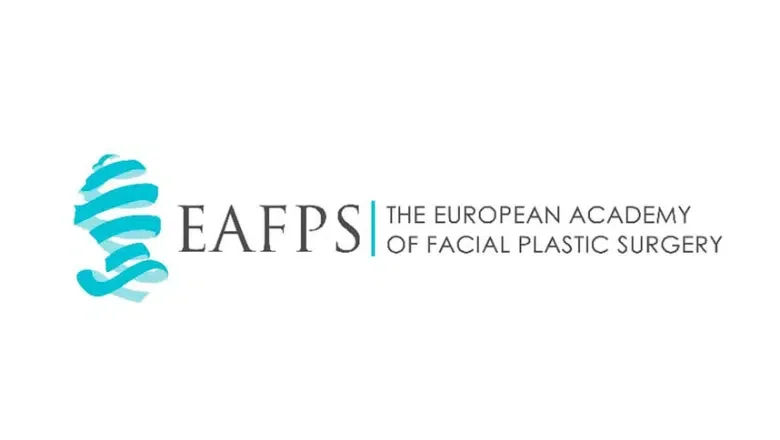Pectus Excavatum Surgery With 3D Custom-Made Implants
Pectus excavatum, commonly referred to as “sunken chest” or “funnel chest,” is a condition where the breastbone and ribcage grow abnormally, creating a noticeable indentation in the centre of the chest. This condition can vary in severity, with some individuals experiencing only a mild dip, while others have a more pronounced and deep concavity. In many cases, pectus excavatum is purely a cosmetic concern, but for some, it can lead to physical symptoms such as reduced lung capacity, discomfort, or difficulty with certain physical activities.
At Centre for Surgery, we offer a highly specialised approach to correcting pectus excavatum through the use of custom-designed chest implants. These implants are tailored to the unique contours of each patient’s chest, providing a natural and symmetrical appearance while helping to restore confidence and improve body image. Unlike traditional surgical techniques that involve complex rib or sternum repositioning, our implant-based approach is minimally invasive and designed to achieve long-lasting, aesthetically pleasing results with a faster recovery time.
What is Pectus Excavatum?
Pectus excavatum, often referred to as “funnel chest” or “sunken chest,” is a congenital condition that affects the structure of the ribcage and sternum. It results in a visible depression in the chest, creating a hollowed appearance. The severity of the indentation can vary significantly from one individual to another, ranging from a mild dip to a more pronounced and deep concavity.
RELATED: What is Pectus Excavatum?
This condition can affect anyone, regardless of age or gender. However, scientific research indicates that males are approximately four times more likely to develop pectus excavatum compared to females. The abnormality arises due to insufficient or excessive growth of the cartilage and bony structures of the ribcage, particularly impacting the lower half of the sternum, from the third rib down to the eighth rib. In some cases, individuals with this condition may also experience scoliosis, a curvature of the spine, which is often associated with chest wall deformities.
Causes of Pectus Excavutum
The exact cause of pectus excavatum remains unknown, and researchers have yet to pinpoint a definitive reason for why the chest wall develops abnormally in certain individuals. However, a strong hereditary link has been identified, as approximately 40% of those affected have a close family member with the same condition. This suggests a genetic predisposition, though environmental and developmental factors may also contribute.
Despite the structural abnormality, the condition is not typically linked to any underlying disease or medical disorder. It is primarily considered a congenital chest wall deformity that becomes more noticeable during childhood or adolescence, often worsening during periods of rapid growth.
Physical and Aesthetic Effects
For the vast majority of individuals with pectus excavatum, the condition is purely a morphological concern, meaning it primarily affects the appearance of the chest without causing significant medical issues. The indentation creates a hollow or caved-in look, which can make some people feel self-conscious about their appearance. Many individuals with pectus excavatum avoid situations where their chest is exposed, such as swimming or gym changing rooms, due to concerns about how they look.
Unlike more severe thoracic deformities, pectus excavatum rarely causes pain or discomfort. In most cases, it does not interfere with heart or lung function, and it does not pose any serious health risks. However, in rare instances where the chest depression is severe, it can exert pressure on the heart and lungs, potentially leading to symptoms such as shortness of breath, reduced exercise tolerance, or mild discomfort during physical exertion. These cases may require medical assessment to determine if intervention is necessary.
Classification of Pectus Excavatum: Three Distinct Types
Pectus excavatum can vary in severity and presentation. While all cases involve a depression in the chest wall, the extent and shape of the deformity can differ significantly. Medical experts classify pectus excavatum into three main types based on the depth and symmetry of the chest depression. Understanding these classifications helps determine the most suitable treatment options, whether for aesthetic correction or addressing functional concerns.
1. Mild Pectus Excavatum
The first type is characterised by a shallow, evenly distributed concavity in the centre of the chest. This form of pectus excavatum is typically symmetrical, meaning both sides of the chest mirror each other without significant deviation. The indentation is usually not very deep, and it rarely causes functional problems with breathing or heart function.
Individuals with mild pectus excavatum may not experience any physical discomfort, and the condition is often only a cosmetic concern. Some cases can appear less pronounced with proper posture and muscle strengthening exercises, although the shape of the chest itself does not change. For those seeking a more permanent solution, custom-designed implants can effectively correct the depression while maintaining a natural appearance.
2. Moderate Pectus Excavatum
This type of pectus excavatum presents with a more noticeable indentation, often with asymmetry, meaning one side of the chest is more sunken than the other. The depth of the depression can vary, and in some cases, the sternum may be twisted slightly, causing uneven chest development. This type is more likely to be associated with mild postural changes and, in some individuals, a slight reduction in lung capacity.
While many people with moderate pectus excavatum do not experience serious physical symptoms, some may notice occasional shortness of breath or discomfort during strenuous exercise. The asymmetry can also make the chest appear more deformed, which may lead to greater self-consciousness. Surgical correction using a custom implant or other reconstructive techniques is often considered by individuals who wish to improve both the symmetry and depth of their chest.
3. Severe Pectus Excavatum
The most advanced form of pectus excavatum is characterised by a deep chest depression that can extend significantly into the thoracic cavity. In severe cases, the sunken sternum may exert pressure on the heart and lungs, leading to functional issues such as reduced endurance, shortness of breath, and, in some instances, minor cardiovascular compression. Some individuals may also develop compensatory postural abnormalities, such as forward-leaning shoulders or an exaggerated curve in the upper spine, due to the chest deformation.
Severe cases of pectus excavatum are more likely to require surgical intervention, particularly if functional impairment is present. While custom implants can provide a cosmetic solution, individuals experiencing significant physiological symptoms may require alternative corrective procedures. A full assessment by a specialist is necessary to determine the most appropriate approach for addressing both the aesthetic and functional aspects of the condition.
Traditional Surgical Options for Pectus Excavatum Correction
Over the years, different surgical techniques have been developed to correct pectus excavatum. Traditionally, two main procedures have been used to reshape the chest and restore a more natural contour.
The Nuss Procedure
The Nuss procedure is a less invasive surgical technique designed to correct pectus excavatum by using a metal bar to reshape the chest from the inside. This procedure is most commonly performed on children and teenagers from the age of eight and older, as their chest walls are still flexible, allowing for easier correction.
During surgery, a curved metal bar is inserted beneath the sternum through small incisions on either side of the chest. The bar is then rotated into place, pushing the sunken breastbone outward to create a more natural chest shape. To provide additional support and stability, a stabiliser bar is often placed alongside the main bar.
Over time, usually within three years, the chest permanently adapts to its new shape. Once the correction is stable, a second surgical procedure is performed to remove both bars, leaving the patient with a normal-looking chest. Since this method does not involve removing cartilage or breaking bones, recovery is typically faster compared to more invasive surgeries. However, postoperative discomfort can be significant, requiring proper pain management in the initial recovery phase.
The Ravitch Procedure
Unlike the Nuss procedure, the Ravitch procedure is a more invasive and traditional method of correcting pectus excavatum. It is typically performed on older teenagers and adults, usually between the ages of 14 and 21, as their chest walls have become more rigid and less adaptable to non-invasive correction.
This technique involves removing the abnormal costal cartilages and reshaping the sternum to bring the chest into a flatter, more natural position. In some cases, the surgeon may need to fracture the breastbone to allow for proper realignment. A support structure, such as a small metal plate or mesh, is often placed within the chest to hold the corrected position in place while the bones heal. Over time, the ribs and sternum fuse into their new, corrected shape, providing a long-term and permanent solution to pectus excavatum.
Since the Ravitch procedure is more invasive, recovery tends to be longer, and patients may experience a higher degree of discomfort compared to the Nuss procedure. However, for older patients with severe pectus excavatum, this technique remains an effective option to restore both chest function and appearance.
Modern Alternatives and Custom Implant Solutions
While both the Nuss and Ravitch procedures remain established surgical options for pectus excavatum, advances in medical technology and surgical techniques have led to the development of custom-designed implants as a less invasive alternative. These implants provide aesthetic correction without the need for bone fractures or metal bars, making them particularly suitable for adults who wish to correct their chest shape without extensive surgery.
At Centre for Surgery, we specialise in pectus excavatum implant surgery, offering a tailored, minimally invasive approach that provides immediate and long-lasting results. Our custom implants are designed using 3D imaging technology, ensuring a perfect fit and natural contour. Unlike traditional methods, implant-based correction does not require long recovery times or additional surgeries, making it an excellent option for those looking for a safe, effective, and permanent solution.
Professor Ertan Erel - Specialist Plastic Surgeon
Professor Ertan Erel is a distinguished Consultant Plastic and Reconstructive Surgeon with over 25 years of experience in the field. He holds the prestigious FRCS(Plast) qualification from the Royal College of Surgeons and an FRCSEd from the Royal College of Surgeons of Edinburgh. His primary areas of expertise include rhinoplasty, body contouring, and complex reconstructive chest surgery. He is highly regarded as one of the leading plastic surgeons in the UK.
Professor Erel completed his medical degree at Aegean University in Izmir, Turkey, and subsequently undertook junior surgical training in East Yorkshire, UK. He dedicated a year to full-time research in plastic surgery, earning a Master of Science degree from University College London. His advanced training includes fellowships in cosmetic surgery in Istanbul and microsurgery in Ghent, Izmir, and Cambridge.
Throughout his career, Professor Erel has contributed significantly to the field of plastic surgery, with numerous publications and presentations at national and international conferences. He is a member of esteemed organisations such as the British Association of Plastic Surgeons (BAPRAS), ISAPS, and the Turkish Society of Plastic Reconstructive and Aesthetic Surgeons.
Preparing for Pectus Excavatum Surgery
Before undergoing surgery to correct pectus excavatum, a thorough preoperative assessment is essential. This ensures that the procedure is tailored to the patient’s individual needs and that there are no underlying health concerns that could affect the outcome. At Centre for Surgery, we follow a comprehensive evaluation process to ensure that every patient is well-informed and fully prepared for their treatment.
The Initial Surgical Consultation
The journey begins with a consultation with a specialist plastic surgeon who has expertise in pectus excavatum correction. During this appointment, a detailed clinical examination is performed to assess the severity of the chest depression, the symmetry of the ribcage, and the overall shape of the chest wall. This examination helps determine the most suitable surgical technique for achieving the best aesthetic and functional results.
The consultation also provides an opportunity for the patient to discuss their concerns, goals, and expectations. The surgeon will explain the available treatment options, including custom-designed implants, and outline the expected outcomes. This is the ideal time for patients to ask any questions they may have about the procedure, recovery, and long-term results.
Advanced 3D Thoracic Imaging
To achieve precise surgical planning, a 3D thoracic scan is conducted. This imaging process involves a CT scan of the entire chest, performed while the patient lies on their back with arms positioned along the body. The scan captures high-resolution images of the chest wall, allowing for the creation of a custom implant that perfectly fits the patient’s anatomy.
This advanced imaging technology ensures that the implant is sculpted with precision, providing a seamless, natural-looking correction. The use of 3D scanning eliminates guesswork, allowing for a personalised approach that enhances both the aesthetic and structural aspects of the chest.
Cardio-Respiratory Assessments
While pectus excavatum is primarily a cosmetic condition, in rare cases, it may be associated with underlying functional concerns, particularly if the depression is severe. To rule out any contraindications, additional cardio-respiratory tests may be performed. These tests assess heart and lung function, ensuring that there are no medical complications that could interfere with surgery or recovery.
Patients experiencing symptoms such as breathlessness, reduced exercise capacity, or chest discomfort may particularly benefit from these assessments. However, for most individuals, pectus excavatum remains a purely morphological condition without significant impact on respiratory or cardiac function.
The Pectus Excavatum Surgery: Step-by-Step Procedure
Pectus excavatum correction using a custom-designed implant is a precise and minimally invasive procedure designed to restore a natural, symmetrical chest contour. Our expert surgeons use advanced techniques to ensure a smooth and effective correction with minimal recovery time. The procedure is performed as a day case, allowing patients to return home the same day.
Step 1: Preoperative Planning and Marking
Before the surgery begins, the surgeon carefully marks the patient’s chest with a preoperative drawing to indicate the exact position where the implant will be placed. This marking ensures that the implant is positioned symmetrically and blends seamlessly with the natural chest anatomy. The markings also guide the surgeon during the procedure, helping achieve a well-proportioned and stable result.
Step 2: Creating the Incision and Implant Pocket
Once the patient is under general anaesthesia, the surgeon makes a 7-cm vertical median incision in the centre of the chest. This incision is carefully positioned to ensure minimal scarring while allowing precise access to the area requiring correction.
Through this incision, the surgeon meticulously prepares a pocket (locus) beneath the muscle, sculpting it to the exact dimensions of the custom implant. This ensures a perfect fit and stability, preventing any movement or displacement of the implant after surgery.
Step 3: Implant Placement for a Natural Look
Once the pocket is prepared, the custom-designed implant is carefully inserted and positioned beneath the muscle. This deep placement ensures that the implant is completely invisible, providing a smooth, natural chest contour without any visible edges or unnatural protrusions. The muscle covering also helps maintain stability, preventing shifting over time.
Step 4: Wound Closure and Finishing Touches
After the implant is securely positioned, the incision is closed in three layers using absorbable intradermal stitches. This technique minimises visible scarring and enhances the final aesthetic result. Because the sutures are absorbable, there is no need for removal, making the healing process more comfortable for the patient.
A sterile dressing is applied to protect the incision, and a compression garment may be recommended to provide additional support during the initial recovery period.
Step 5: Same-Day Discharge and Recovery
Pectus excavatum implant surgery is a day-case procedure, meaning patients do not need to stay overnight. After a short period of observation, they can return home later the same day. Mild swelling and discomfort are expected in the first few days, but these symptoms are manageable with prescribed pain relief. Most patients can resume light activities within a week, with a full return to normal exercise within four to six weeks.
Postoperative Care and Follow-Up After Pectus Excavatum Surgery
Recovering from pectus excavatum correction is generally smooth and straightforward, with minimal discomfort and a structured aftercare plan to ensure optimal healing. Following the procedure, patients are provided with clear postoperative instructions to promote proper recovery, reduce the risk of complications, and ensure long-lasting results.
Managing Postoperative Pain
Pain after surgery is usually mild to moderate and can be effectively managed with simple painkillers prescribed by the surgeon. Most patients find that discomfort is short-lived, with significant improvement within the first few days. The sensation is often described as muscle soreness rather than sharp pain, as the implant is positioned beneath the muscle.
Wearing a Thoracic Compression Garment
To support healing and stabilise the implant, patients are required to wear a thoracic compression bra with a midline pad continuously for one month, both during the day and at night. This specialised garment helps to:
- Reduce swelling and fluid accumulation.
- Maintain implant stability in the early healing phase.
- Provide support to the chest muscles as they heal.
Wearing the compression garment as advised is essential for achieving the best possible aesthetic outcome and ensuring a smooth recovery process.
Management of Postoperative Fluid Build-Up
It is normal for a blood-tinged fluid effusion, followed by a serous (clear fluid) effusion, to develop in the surgical area. This is a steady and expected part of the healing process. However, to prevent excessive fluid accumulation, punctures (fluid drainage procedures) are required at scheduled intervals.
- The first puncture is performed on the day of discharge to remove any initial fluid build-up.
- Subsequent punctures are carried out every eight days, typically ranging from two to five sessions in total.
- These procedures are painless and performed quickly during follow-up visits.
Regularly draining any excess fluid keeps the healing process smooth, preventing complications such as excessive swelling or discomfort.
Returning to Work and Physical Activities
Most patients can return to work within 15 days, depending on their occupation and level of physical activity required. Those with desk-based jobs may resume sooner, while individuals with physically demanding roles may need additional recovery time.
Exercise and sports must be avoided for three months to allow the chest muscles to heal properly. After this period, activities can be gradually reintroduced under medical guidance. Patients should avoid high-impact or intense weightlifting for at least a year, as the complete healing of the pectoralis major muscles takes approximately 12 months. Sports and exercise should be resumed progressively and cautiously, ensuring that the muscles are not overstressed during the recovery period.
Results of Pectus Excavatum Surgery: What to Expect
Pectus excavatum correction using a custom-designed implant delivers immediate aesthetic improvement, but the final results take time to fully develop. The healing process follows a gradual timeline, with changes in chest appearance, comfort levels, and scar maturation occurring over several months.

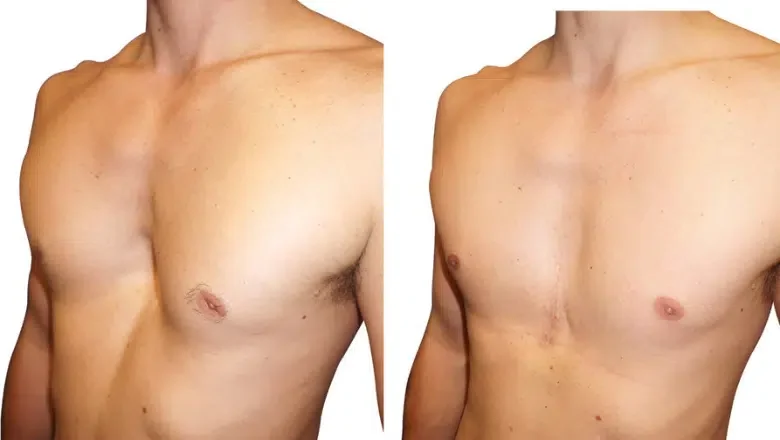
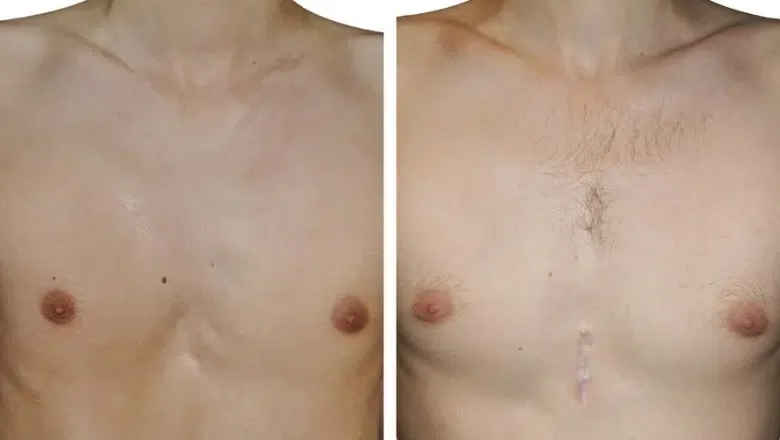
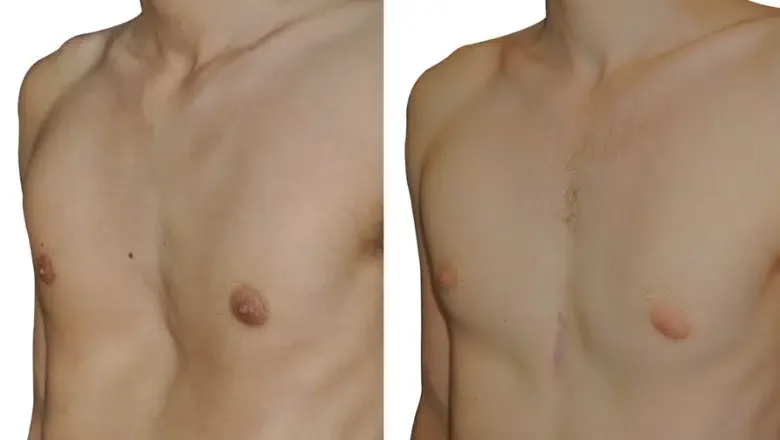
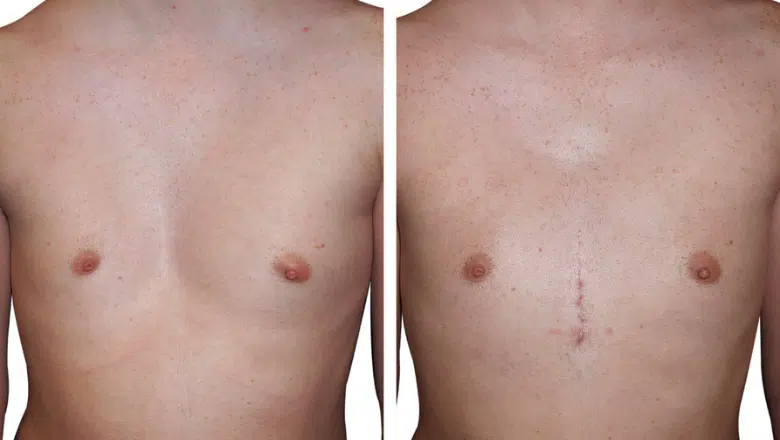
Risks of Pectus Excavatum Surgery
Pectus excavatum correction using a custom-designed implant is a minimally invasive procedure with a high safety profile, particularly when compared to more extensive orthopaedic surgeries that involve restructuring the ribcage. While the risk of complications is low, as with any surgical procedure, there are potential risks that patients should be aware of. The vast majority of complications can be avoided by choosing an experienced surgeon and following proper post-operative care.
General Surgical Risks
Since the procedure is performed under general anaesthesia, there are standard risks associated with anaesthesia, including nausea, drowsiness, or, in very rare cases, adverse reactions. However, modern anaesthesia techniques ensure that complications are extremely rare, and patients are closely monitored throughout the procedure.
Potential Risks and How They Are Managed
- Infection – Although rare, infection is a potential risk following any surgery. To minimise this risk:
- The procedure is performed in a sterile environment.
- Patients are prescribed antibiotics as a precautionary measure.
- Proper wound care and hygiene are essential during recovery.
- Haematoma or Seroma Formation – Some fluid accumulation (serous or blood-tinged) is expected after surgery. This is managed with:
- Scheduled fluid drainage (punctures) to prevent excessive swelling.
- Wearing a thoracic compression garment to reduce fluid build-up.
- Implant Displacement – In rare cases, the implant may shift slightly from its original position. This is extremely uncommon when the procedure is performed by an experienced surgeon and when the post-surgical protocol is followed. To prevent displacement:
- The implant is securely placed beneath the muscle for stability.
- Patients must avoid strenuous movements for the first few months.
- Gradual return to exercise is essential to allow the chest to heal properly.
- Scarring – The surgical incision is small (7 cm) and positioned carefully to minimise visible scarring. In most cases:
- The scar fades significantly over time.
- The use of absorbable intradermal stitches improves healing.
- Scar management treatments, such as silicone gels, may be recommended if needed.
- Unnatural Chest Appearance – Since each implant is custom-designed, asymmetry or unnatural results are extremely rare. However, to ensure the best aesthetic outcome:
- A 3D chest scan is performed before surgery to create a perfectly tailored implant.
- The surgeon carefully positions the implant for a smooth, natural contour.
- Muscle Healing Time – Complete healing of the pectoralis major muscles takes approximately one year. During this period:
- High-impact exercises should be avoided for the first three months.
- Sports and physical activities should be gradually reintroduced to prevent strain.
Why Choose Centre for Surgery for Pectus Excavatum Surgery?
Centre for Surgery is a leading specialist clinic in London, offering expert care and cutting-edge techniques for pectus excavatum correction. Our highly skilled plastic surgeons provide custom-designed implants tailored to each patient’s unique chest anatomy, ensuring natural, long-lasting results with minimal downtime. With a strong commitment to patient safety, personalised care, and surgical excellence, we are the premier choice for pectus excavatum correction in the UK.
Our approach combines advanced 3D imaging, state-of-the-art surgical facilities, and a team of highly experienced surgeons to deliver outstanding results. We understand that pectus excavatum is not just a physical condition but can also impact confidence and self-esteem. That’s why we focus on achieving results that enhance both appearance and well-being.
Expert Surgeons with Proven Experience
Our team consists of some of the UK’s most skilled plastic surgeons, each with extensive experience in chest wall correction and custom implant surgery. We use the latest techniques to ensure minimally invasive procedures, precise implant placement, and a smooth recovery process. Our commitment to innovation and patient-centred care makes us a trusted choice for those seeking pectus excavatum correction.
Custom-Designed Implants for Natural Results
Unlike traditional reconstructive surgeries, our approach involves custom-made silicone implants, designed using 3D thoracic scans to match the exact contours of your chest. This ensures a perfect fit, seamless integration, and a natural appearance. Our technique allows for a quicker recovery, minimal discomfort, and results that last a lifetime.
Comprehensive Patient Care and Support
From the initial consultation to postoperative follow-ups, we prioritise your comfort, safety, and satisfaction. Our dedicated team ensures that you are fully informed, supported, and cared for at every stage of your journey.
For more information about our clinic and approach:
Why Choose Centre for Surgery?
Patient Testimonials
Many of our patients have regained confidence and improved their quality of life after pectus excavatum correction. Here’s what they have to say:
James T., London – “The transformation was life-changing. My chest now looks completely natural, and I finally feel confident going shirtless. The entire team was professional, supportive, and reassuring throughout the process.”
David R., Manchester – “I had always been self-conscious about my sunken chest. The consultation was informative, and the surgery was smooth. My recovery was quicker than expected, and the results exceeded my expectations.”
Mark S., Birmingham – “I was worried about the procedure, but the team at Centre for Surgery made everything stress-free. The results are outstanding, and I wish I had done this sooner. My self-esteem has improved dramatically.”
Finance Options Available
We understand that cost can be a concern, which is why we offer flexible finance options, including 0% APR financing with Chrysalis Finance. This allows you to spread the cost of your treatment into manageable monthly payments.
Learn More About Our Finance Options
Book a Consultation Today
If you are considering pectus excavatum surgery, our team is here to guide you through the process. Contact us to book a consultation and take the first step towards a more confident you.
📞 Phone: 0207 993 4849
📧 Email: contact@centreforsurgery.com
📍 Clinic Address: 95-97 Baker Street, London W1U 6RN
Learn More About Pectus Excavatum Surgery
For further information, explore our resources:
- Plastic Surgery Blog – Stay updated with the latest insights and expert advice.
- Clinic FAQs – Get answers to common questions about procedures and recovery.
Centre for Surgery is dedicated to delivering exceptional results with expert care. Contact us today and start your journey to a more balanced and confident chest.
FAQs
-
When Is Pectus Excavatum Considered Serious?Pectus excavatum is usually an aesthetic concern rather than a medical one. It rarely causes functional issues like shortness of breath or chest pain. If these symptoms are present, functional tests may be necessary to assess any impact on heart or lung function.
-
When Can I Resume Sport?Sport is not allowed for the first three months. After that, activities should be resumed gradually over a year. Sudden or intense movements involving the pectoral muscles should be avoided during this period.
-
Is Surgery Suitable for Those Practising Bodybuilding?The forced contraction of the pectoral muscles may cause a slight visible transverse movement under the skin. This does not cause functional discomfort, but bodybuilders should be aware of this possibility.
-
What Steps Should I Take to Have the Surgery?A consultation with a specialist plastic surgeon is the first step. A 3D thorax scan and digital photos from multiple angles will be required for preoperative planning.


